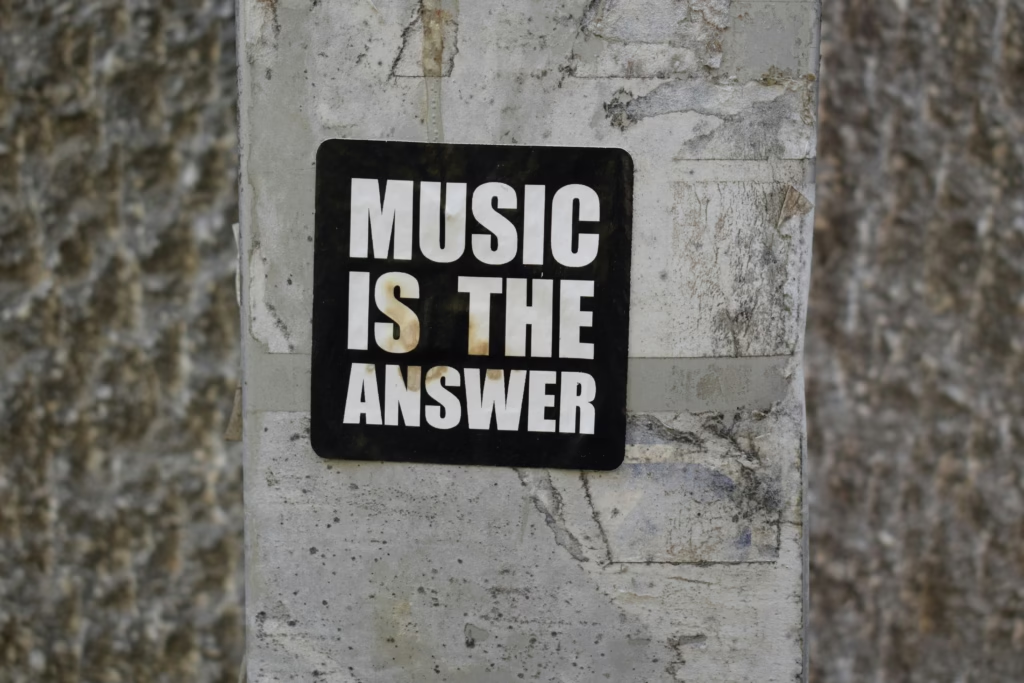When you hear the word “storytelling”, you might think of heroes and villains and monsters and dragons. A lot of fluffy, fictional stuff irrelevant for business.
That misconception is what holds many professionals back from the true persuasive power of their communication.
What if I told you that storytelling is not an art, but a science. And you can wield its full potential in a structured, methodical way, just like the technical skills you know so well.
In this article I will break down why statistics pale in comparison to storytelling, the 3 major chemicals released when you hear a great story, and how you can trigger each one in balance to tell great stories of your own.
- Consider This Example
- Cortisol: The Stress Hormone
- Dopamine: The Pleasure Hormone
- Oxytocin: The Love Hormone
- Summary
Consider This Example
First, let me give you a statistic:
“Nervous system cancers (such as brain cancer) make up about 3% of all cancer deaths. According to the National Cancer Institute, nearly 19,000 people in the United States died of nervous system cancers in 2023”1
Does that motivate you to donate to brain cancer research?
Now, consider this story:
George hung up the phone quietly, barely mustering the strength to stop his hands from shaking. His 7 year old son, Marcel, had been diagnosed with terminal brain cancer.
He left the office, and drove immediately to the hospital where his son lay on the hospital bed.
“Dad, what’s going on?”
George said, “Everything’s going to be fine Marcel.”
George swiftly left the room, closed the door behind him, and pulled the doctor to the side, “How long does my son have?”
“1 month”
Every day George sat tirelessly by the bedside. He watched his son undergo treatment after treatment to no avail. Marcel’s condition was only getting worse.
After a week, the doctor pulled George outside and said, “I’m sorry sir, but we only have 2 weeks left”
George exclaimed, “Please, is there anything else we can do?! I can’t…I can’t lose him like I lost his mother”
The doctor thought for a second and said, “We might have something…it’s very, very new. But thanks to a recent grant we’ve been able to get a few units into production”
A few days later George woke up to his son’s voice, “Dad, how long have you been here?”
George groggily looked up and couldn’t believe his eyes. He touched his son’s face and couldn’t keep his hands from shaking as he said, “Marcel, you seem…so much better!”
The doctor came in and said the new treatment had worked. He said they would be able to go home.
George looked at Marcel and smiled.
He had sat in this hospital with his wife only a few years prior. But this time, this story had a very different ending.
Now, does that motivate you to donate to brain cancer research?
The Study
The story I told you is not a fabrication. Dr. Paul Zak conducted a very similar experiment in 2009 to examine the neuroscience behind storytelling.2 He had one group of participants watch a video about a father and son at the zoo (just a “list” of events, similar to the list of facts and statistics I initially gave you). Another group saw a video with a story: this time, you see a father talk to his son diagnosed with terminal brain cancer.
Zak found that participants were much more likely to donate money after they watched the video with the story.
Why? Because stories literally induce changes in our brain chemistry.
Let’s break it down:
Cortisol: The Stress Hormone
The first chemical is cortisol, commonly known as the “stress hormone”.3 When we face stressors like getting cut off in traffic, facing a wild animal, or going up on stage for public speaking, our body physically prepares us for fight or flight. Our heart and respiratory rate increase and our focus sharpens to enable us to handle the threat.
This is significant because when we hear a story, we’re not just listening to the events as they happen.4 The neurons in our brain have us experience them with the storyteller. We smell the scents and hear the sounds and feel the pain.
- When George discovered his son had terminal brain cancer, you felt shock because he felt shock.
- When George learned his son had one month to live (and later only 2 weeks), you felt urgency because he felt urgency.
And that made you pay attention.
The number one rule for storytelling is it can’t be all sunshine and rainbows. If you want people to be engaged and not see your “story” as just another blip of empty noise, you need to introduce tension.
- That could be a problem your organization is facing that needs to be resolved.
- Or it could be a big dip in a high priority metric that has become a cause for concern.
Inject urgency into your story and increase your audience’s stress to make them care: cortisol assists in building memories.5
Remember that we as human animals are designed to respond to stress so that we can learn and survive. Stress is only bad if it’s prolonged…which is where chemical number 2 comes into play: dopamine
Dopamine: The Craving Hormone
What did you feel when you read this line,
“The doctor came in and said the new treatment had worked. He said they would be able to go home”
Relief!
- The same relief when you’re really hungry and you finally get a bite to eat.
- Or the same relief when you’re running a marathon and finally make it past the finish line.
Whenever we set a goal, get closer to a goal, and accomplish a goal, we get a rush of the “craving hormone” dopamine.6
That’s why you stuck to the story about George and Marcel even after the initial spike of cortisol focused your attention. You identified a goal (we want Marcel to get better), and craved seeing that goal accomplished. It was because of the progressively increasing stress in the story that that goal became more and more significant, until finally you got the huge reward at the end you had been looking for.
The second rule for storytelling is therefore to include a goal.
- That could be a resolution of the problem your organization is facing
- Or a new software update to make your high priority metric go back up in the right direction
Make your business stories goal-oriented to hold your audience’s attention until the end.
But consider this: the emotional engagement from dopamine won’t happen if we don’t care about the goal.
So how do you make people care?
The answer is the final chemical in our series: oxytocin.
Oxytocin: The Social Hormone
Dr. Paul Zak, who found that research participants were more likely to donate money after watching a story, had his biggest revelation around oxytocin, the “social” hormone. Zak found that the levels of cortisol in participants increased during moments of tension in the story, such as when the father struggled to spend the remaining time with his son, but levels of oxytocin also increased.2
In fact, participants who donated the most money had the highest amounts of oxytocin in their blood. Further, follow-up experiments by Zak and his team found a strong causal relationship between oxytocin and social affiliation/bonding.
That’s why this line in particular from the story probably stood out to you:
George exclaimed, “Please, is there anything else we can do?! I can’t…I can’t lose him like I lost his mother”
That line made George a fully-fleshed person, someone who only cared about his son, but also lost his wife in a previous tragedy. You relate to George because you have a father or a son or a wife or a mother. You relate to George because, on an even deeper level, you understand what it feels to lose someone or something you deeply love and the fear of seeing it happen again.
The third rule for storytelling is therefore to include relatable characters. In the world of numbers and data we occupy in the tech world, this can be difficult but not impossible.
- Rather than talking excessively about our models and metrics and analysis steps, we can focus on their impact on the business.
- Include a hypothetical user who is using the product after its update.
- Or talk about how people within a new customer segment will benefit from the new change to our marketing strategy.
Always aim to make your story as human as possible.
For more information on a structured framework to organize your storytelling, read more here
Summary
Facts fail. Stories stick.
Recall this list of statistics, “Nervous system cancers (such as brain cancer) make up about 3% of all cancer deaths. According to the National Cancer Institute, nearly 19,000 people in the United States died of nervous system cancers in 2023”1
That doesn’t meaningfully trigger our attention because:
- There is no goal we care about
- The information remains abstract and numerical, and hard for us to socially/emotionally connect to
- While the information is negative, we’re not stressed because we don’t care about any relatable characters
Stories, on the other hand, do meaningfully trigger our attention and inspire action because of the following 3 chemicals:
1. Cortisol, the “stress hormone” is triggered for problems we care about
2. Dopamine, the “pleasure hormone” is triggered for goals we care about
3. Oxytocin, “the love hormone” is triggered for characters we care about
Include problems, goals, and relatable characters and you’ve set your communication up to be a powerful story.
If you’re looking for further guidance on how to speak with confidence and authority, reach out to me here.
For a live example of all these principles at play, you can watch my TEDx talk on technical presentation+storytelling below:
Sources
1 National Cancer Institute, “Cancer Stat Facts: Brain and Other Nervous System Cancer”
2 National Library of Medicine, “Why Inspiring Stories Make Us React: The Neuroscience of Narrative”
3 National Library of Medicine, “Physiology, Cortisol”
4 Forbes, “Human Beings Are Wired for Story: Here’s Why”
5 Harvard Business Publishing, “The Science Behind The Art of Storytelling”
6 Fast Company, “Why you love setting goals more than pursuing them, according to science”



